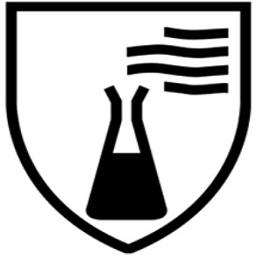Global Presence
Granitania has an extensive global presence thanks to its great people in own offices in different countries and of course with the important support of hardworking and self...
User not logged in.
The manufacturing process of engineered quartz begins with selection of raw quartz materials. They are crushed and blended in the ratio of around 93% quartz aggregates to 7% polyester resin and other additives. The mixture is compacted into slabs by a vacuum and vibration process of approximately 100 seconds at a pressure of about 100 tons. This process minimizes porosity and reduces water absorption. The slabs are then cured in a kiln at a temperature of 85 degree for a period of 30 minutes to attain the essential properties of resistance to stain and impact. The curing process may be accelerated by using ovens or steam. When curing is completed, the slabs are gauged, calibrated, polished and prepared for packing.
They are increasingly popular in high-end applications combining the benefits of granite’s durability and non-porous nature of quartz. As they are man-made, these materials can be fabricated in large sizes, resulting in less joints and better aesthetics. Engineered quartz slabs, countertops and kitchen islands are available in a wide range of colors, patterns, and even textures. Beyond brute strength and heat resistance, these man-made products come in a myriad of shades and styles. In addition to kitchen islands and countertops, engineered quartz products are suitable for shower and tub surrounds, vanity tops and other surfaces in wet areas, unlike porous stones, which can foster bacteria growth. They are therefore ideal for locations such as commercial buildings, canteens, hospital food service areas, etc.
Most patterns of engineered quartz resemble natural stone, but with a consistent pattern, texture and color. Thus, kitchen islands and countertops made of engineered quartz have a uniform appearance. The hard, non-porous surface retains its polished lustre and does not need sealing treatment on the surface. It can also be cleaned and maintained with normal or soapy water. Some engineered stones are made to look like limestone or marble, enabling you to get the natural coloring and texture you want but with better performance. This also makes engineered stone counters a fine stand-in when you prefer to use recycled materials or protect natural resources like real marble. Plus, many contractors are familiar with the products and will install them properly.
WHY SHOULD YOU CHOOSE ENGINEERED STONE?
Engineered stone is manufactured by combining quartz aggregates with resins and pigments. Ideally, this manmade product is non-porous and durable, but even as an engineered stone, quartz can still be resistant to scratches, dents and abrasion. Moreover, it can still be acid-resistant even if you do not regularly seal it. Since quartz is naturally abundant, the environmental impact of manufacturing engineered stone surfaces is low. It is also available in a range of designs, prices and styles, making it a popular choice amongst professional contractors and home renovators.
Increased Aesthetic Appeal For The Space: When quartz aggregates are compressed into slabs, they are given the same colour and texture as natural granite, marble or quartzite etc. You would notice that the only difference is the uniformity in colour, as natural stone tends to vary in hues. Of course, this is good for those who want a bit of character and uniqueness on their countertops and kitchen islands, but, when an untrained eye looks at the engineered stone countertops and kitchen islands, they generally wouldn’t be able to distinguish them from the natural stone ones. The great thing about engineered stone countertops and kitchen islands is that you can get them in a wide range of colours, available in rose hues, earth tones, greys and more. In general, they are available in various natural hues of quartz, but some manufacturers can still add colourants to the mixture to achieve the ideal tone. Needless to say, you can definitely find an option that is suitable for your home and preferences with so many options available. With engineered stone countertops and kitchen islands, you’ll be able to increase the aesthetic appeal of your kitchen.
Countertops and Kitchen Islands That Last a Lifetime: One of the great qualities of engineered stone is its durability, which can be compared to the hardness of natural granite, and won’t crack as easily as slate. Engineered stone is also resistant to heat, therefore it wouldn’t scorch even if you accidentally placed a hot pot on the surface. What’s more, this material is resistant to scratches and cuts, so, it will remain looking like brand new for a long time. With that said, we still advise you to avoid cutting vegetables on the surface.
Can Be Cleaned With Ease: Natural stone surfaces may be strong and stunning, however, they are also quite porous, if not sealed and polished well, allowing bacteria to make its way into the fissures and pores, which can be difficult to clean. On the other hand, engineered stone countertops and kitchen islands are non-porous, if sealed and polished well, don’t absorb liquids, and can be easily and efficiently cleaned with no hassle. If you’re always dealing with raw meat, fish or vegetables in your kitchen, engineered stone can be useful in ensuring food safety in that manner.
Resistant To Stains: We’ve tackled the tedious process of maintaining and cleaning marble countertops and kitchen islands. Natural stone might be more prone to staining, if not sealed and polished well, besides, it’s important to regularly seal its surface, otherwise you’d have to go to great lengths just to remove stains caused by oil, wine, juice and other substances. On the other hand, with engineered stone, even when the sealant wears off, the surface will still be able to resist staining for a while. This material can keep its beautiful appearance longer than that granite, marble or quartzite can against certain stains in that manner.
You’re Spoilt For Choice: As we’ve mentioned, engineered stone is available in a wonderful selection of colours and styles. Compared to natural stone, your choices are not as limited as produced by nature itself, on the contrary, the limit is the imagination of human mind alone, that designs and manufactures the product with highest quality of materials and cutting-edge technology.
Perfect For Various Applications: Because of its non-porous and durable properties, engineered stone is the ideal material for countertops, kitchen islands, backsplashes and even for bathroom vanity tops as well. On the other hand, you can also use it for many other applications, including design surfaces and drawing tables or general worktops and office tables, meeting or studying platforms etc.
ENGINEERED STONE INSTALLATION INSTRUCTIONS
This manual provides technical and practical information about the use of engineered stone slabs; basic technical characteristics, packaging and handling, storage, and installation details. These instructions, combined with the experience and skill of the fabricator, will enable you to get the most out of the product.
The engineered stone slabs must be loaded, unloaded and transported with the aid of an appropriate lift truck, crane or other handling equipment. Always be sure to balance the load when handling and transporting it. The worked surface of engineered stone slab is protected by a clear polyethylene film.
The carrier must carefully and appropriately fasten the material when loading. The reported figures depend on the tractor engine dimension. While handling a container load, the weight limits imposed by any port of entry must be duly respected. The slabs produced are positioned on A-Frames adequate to transportation and storage, and appropriately labelled.
The engineered stone slabs must be handled (for loading and unloading) and transported using an appropriate lift truck, crane or other handling device for the weight. Before starting the work, please be careful with balance the load during handling and transportation.
If you are using a forklift, please set the forks in the right situation to ensure the A-frame stability. Please lift the a-frame as close as possible to the lift truck and tilt it toward the driving position of the forklift to increase the stability of the load.
The information contained in the above tables are as accurate as possible, but should not be considered legally binding. Granitania reserves the right to change and update packaging (A-Frame type, size, number of slabs, etc.) at any time with no advance notice, related to the requirements of transport safety of the subject case.
Moving the slabs must be done from a security position. Avoid areas of possible material fall when you are transporting or handling. The final material storage has to be done using A-frames with bars or pin-racks. Any further handling must be carried only using A-frames (wood or metal) using protections to prevent the fall of them. For the vertical storage of the slabs, place protections (wood, plastic or rubber) to prevent scratching and chipping at the support point.
Opening the package and cutting the straps; check that the upper hook is placed holding the slabs; if it´s not in this position, proceed to it´s placement. Then, start cutting the vertical straps, and continue cutting the horizontal (at the bottom and top).
Cut the central straps in the following order; first the strap that passes through the buttonhole, then the strap on the side where you want to operate, please check that the other side of the bundle is fastened. When you are cutting the strap, hold the strap with one hand, this operation will avoid the propelling of the strap when cut.
Safety requirements to move an open bundle; check the stability of the slabs before any type of manipulation. Verify that the upper hook is placed by holding the slabs; if it is not in this position proceed to its placement. Please, fasten the material with straps using each side of the bundle independently (number of fasteners appropriate to the maximum weight and the load to be transported).
Placement of another fastener that passes through both sides of the bundle to attach the set of the stowed load. To move the A-frame once it is stowed, use lifting elements that allow the assembly to move in safety conditions.
To store multiple slabs, please only store them together if they are the same size. Don´t leave the slabs without the proper stand, they could be broken if the slabs are badly supported. Do not place any other material on top of the slabs. Take care while you are moving the slabs, always be careful to prevent shocks or bumps which could break the slabs.
If you are using clamps, please pick up carefully a single slab. Please position the clamp in the middle. Before use, please check the manufacturer instructions manual of the clamp to verify the weight limits. To pick up multiple slabs, a lifting beam is recommended. Do not use steel slings, these slings could damage the surfaces and edges of the slab. We suggest to use textile slings.
The cut pieces can have sharp edges and therefore have to be handled with care and with adequate edge protectors. If the product is not packed properly it can produce breaks. Protective equipment recommended during the handling process. During the process of cutting or polishing the material, make use of respiratory protection following the safety data sheet of the product.
Installation of kitchen countertops; the countertop must be transported to the installation site packaged.
• Do not step on the material, even when packaged.
• Remove packaging carefully, always taking out the countertop vertically, never flat.
• Position the countertop on the base and level it perfectly by adjusting the supporting feet, being careful not to leave any gaps. In the presence of excessive weight, even minimal gaps can cause the countertop to break. Immediately after installation, the weight of furnishings and fittings, heat and moisture can affect the levelling. It is recommended to recheck it a few months after installation.
• To anchor the countertop in place, apply silicone with different anchorage points to the kitchen cabinets.
• To anchor backsplashes in place, apply a bicomponent resin over the entire perimeter. Clean thoroughly.
ENGINEERED STONE CARE AND MAINTENANCE
Engineered stone is polished and sealed during manufacture of the slab and should retain its polish indefinitely. If a recommended cleaner has not been specified, regular use of an everyday stone cleaning spray will lift any dull appearance.
For regular cleaning; engineered stone is easy to clean. Use a clean soft cloth and clean hot soapy water, rinse thoroughly and dry with a clean cloth; non-abrasive neutral pH-7 dishwashing detergent is most suitable. Gentle use of a plastic/non scratch scotch-brite pad or similar can be used to remove any stubborn food residues.
For occasional deep cleaning; squeeze a small amount of cream cleanser onto a clean soft wet cloth. Press and squeeze the cloth to make a frothy mixture. Using the flat of your hand, wipe the cloth in a circular motion across the entire surface, avoid rubbing in one spot. Wipe off excess liquid. Rinse the surface with clean warm water and a clean cloth. Dry surface with a soft, dry, clean cloth or paper towel. Always test surface suitability prior to use in an inconspicuous area.
Engineered stone is very durable. Avoid hitting with anything blunt or heavy as this can cause chips and cracks. Avoid sitting, standing or placing heavy items on unsupported areas.
Engineered stone is scratch resistant and everyday household utensils will not mark. We recommend use of a chopping board.
Engineered stone is heat resistant and moderate temperatures will not affect the stone. It is recommended that a heat pad be used under electric frying pans and a trivet for hot saucepans and pans, as extreme temperatures can cause damage.
Engineered Stone should not stain under normal circumstances, although, prolonged exposure to oils, acids and items with high food colouring may cause staining. To avoid the risk of staining, simply clean immediately.
For routine maintenance; for daily cleaning, a damp microfiber cloth is enough. For regular cleaning, we kindly repeat here that, we suggest using a neutral liquid detergent with a soft sponge or a microfiber cloth.
For persistent stains; persistent stains can be removed with a slightly abrasive sponge; if necessary, use a specially formulated stain remover. Do not use steel wool pads, because these would leave metal traces that would then have to be cleaned again.
As precautions; remove any spills of staining liquids (like coffee, tea, red wine), caustic substances (such as oven cleaner), acids and colorants as soon as possible and rinse with water. Engineered stone surfaces are particularly resistant to thermal shocks. You can place hot pans directly on the surface, however we recommend the use of trivets to protect the surface over time. Ceramic knives can damage the surface; therefore, we recommend to use cutting boards. Avoid hitting the most delicate parts of the surface, such as its corners and edges.
Eco-facts; maintaining the Granitania commitment with the environment and looking for materials respectful of it, the engineered stone positions itself as the reality of the present and the future.
Life cycle; engineered stone is a heavily natural, but, at the end, an artifical material, that, unlike other fully artifical materials such as rugs, vinyls, laminated sheets, (which need to periodically be replaced) once installed correctly, it can last for a lifetime.
Hygiene; due to its low porosity, engineered stone prevents the formation of fungi and bacteria and is used regularly in hospitals in order to replace other materials, thereby preventing allergies and asthma in persons.
Easy maintenance; unlike other materials that require chemical products for cleaning, engineered stone may be easily cleaned with water.
Indoor air quality; the Greenguard certificate guarantees that the products it certifies do not emit toxic substances that effect indoor air quality and the health of persons, thereby; following the directives of the National Toxicology Program of the United States, among others.
Stain Type and Detergente:
Regular Cleaning: Common detergent
Oxides: Acid descaling agent
Limescale: Alkaline detergent / acid descaling agent
Wine: Alkaline detergent / acid descaling agent
Ice cream: Alkaline detergent / acid descaling agent
Resin or glaze/enamel: Solvent
Coffe: Alkaline detergent / acid descaling agent
Wax candle: Solvent
Greases: Alkaline detergent / acid descaling agent
Cement: Acid decaling agent
Grouting joints: Acid decaling agent
Plaster: Acid decaling agent
Joints and Epoxi based adhesives: Solvent
* In case of using bleach as cleaning product, this must be water diluted.
* As a general rule, it is advisable to start with low concentrations or maximum dilution. Increase the amount little by little, depending on the results.
* It is important to know that hot water has a higher cleaning potential than cold water.
Remember: Despite the aging, engineered stone can always be re-polished to recover its original finish.
Caution: Observe the detergent manufacturer’s precautions and recommended dilutions. Do not use products containing hydrofluoric acid or its derivatives.






The Engineered quartz collection is specifically designed for high-end kitchen countertops. Thanks to their hardness and resilience, these surfaces are the perfect base for the work of chefs and devotees of haute cuisine. As solid and charismatic products, they are the ideal finishing touch for kitchen islands, bar counters and work areas where the art of cooking becomes a pleasure for the senses.
All Engineered Quartz ApplicationsGranitania has an extensive global presence thanks to its great people in own offices in different countries and of course with the important support of hardworking and self...
Granitania has meticulous and detailed procedures applied in accordance with the ISO 9001 certification for quality assurance & control regarding all details of its own and also all of its...
Granitania has a strong logistics service managing many deliveries per year in different means of transport to many locations for its Clients all over the world. If you need competi...
Granitania Foundation is a non-profit organization, an expression of Granitania Group’s Organization Social Responsibility and in particular its commitment to the improvement...
Health and Safety is the leading one among the fundamentals of Granitania’s mission. It is a must for our organization to make sure the required Health & Safety regulations, qualifications and...
Granitania’s commitment to the environment is based on the fundamental pillars of sustainable development and business ethics, covering the whole product lifecycle. In the area of sustain...
Innovation is a key element in processes and product development strategies realized in Granitania’s cooperations with its supplier partners and is the main factor that leads all...
We know that our Clients’ trust in our brand is the future of our organization. Considering the heavy responsibilities we are taking as Granitania by providing to our Clients all these solid warran....
Find out news about Granitania and The World of Natural Stones & Engineered Stone Surfaces, new products, events, social activities, meetings, workshops, improvements & developments...
Granitania is focused to be a game-changer in the quarrying, processing & production and marketing of natural stones and engineered stone surfaces. It is in the process of having global...
As Granitania People, we are at your service to answer any questions you have on our organization, products and services regarding as sourcing, distributions, installations...
These website disclaimers incorporate a copyright notice asserting ownership of the website copyright, a set of exclusions and limitations of liability (ie disclaimers) and...